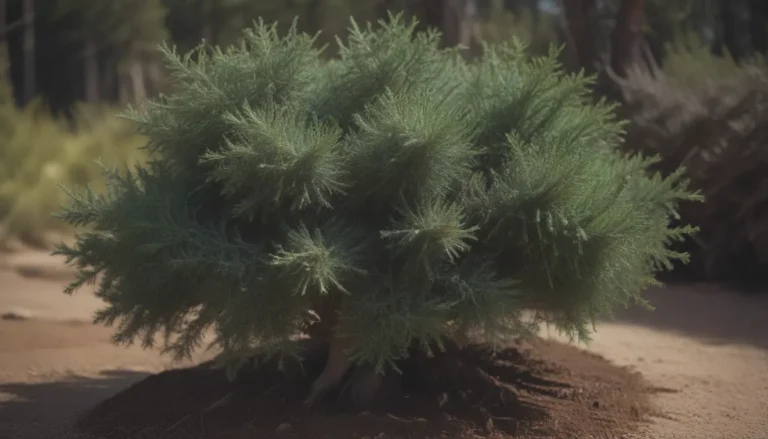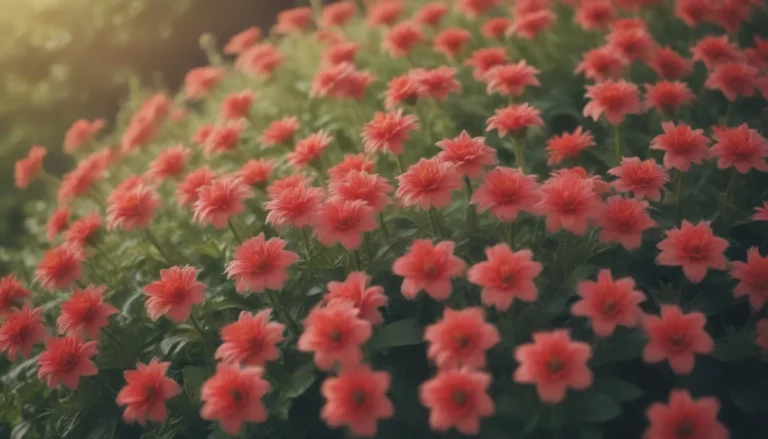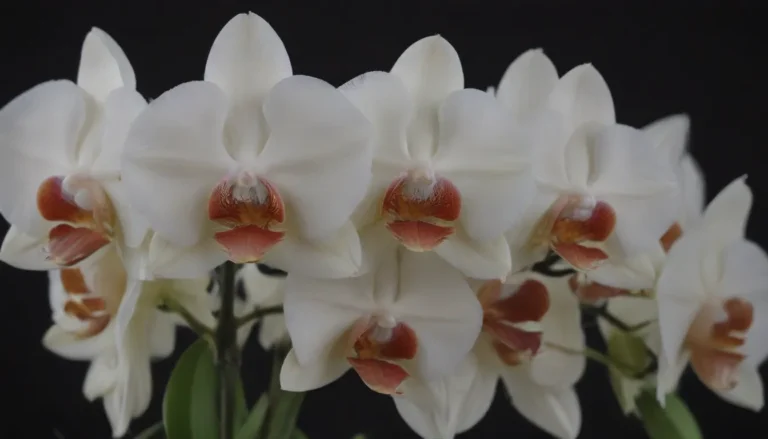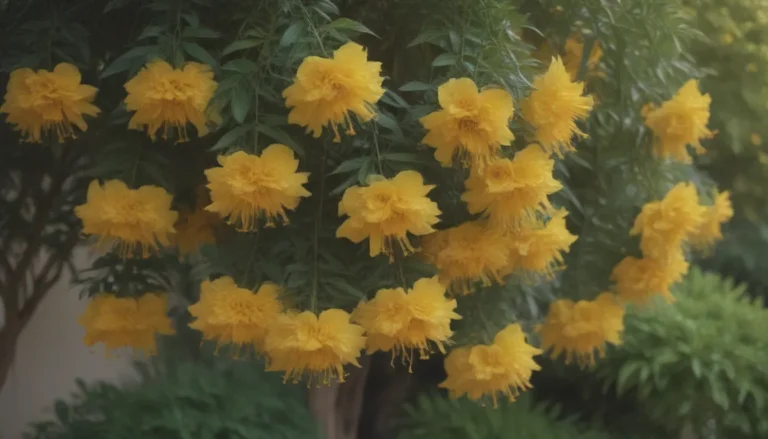Mastering the Art of Growing and Caring for Ghost Plants
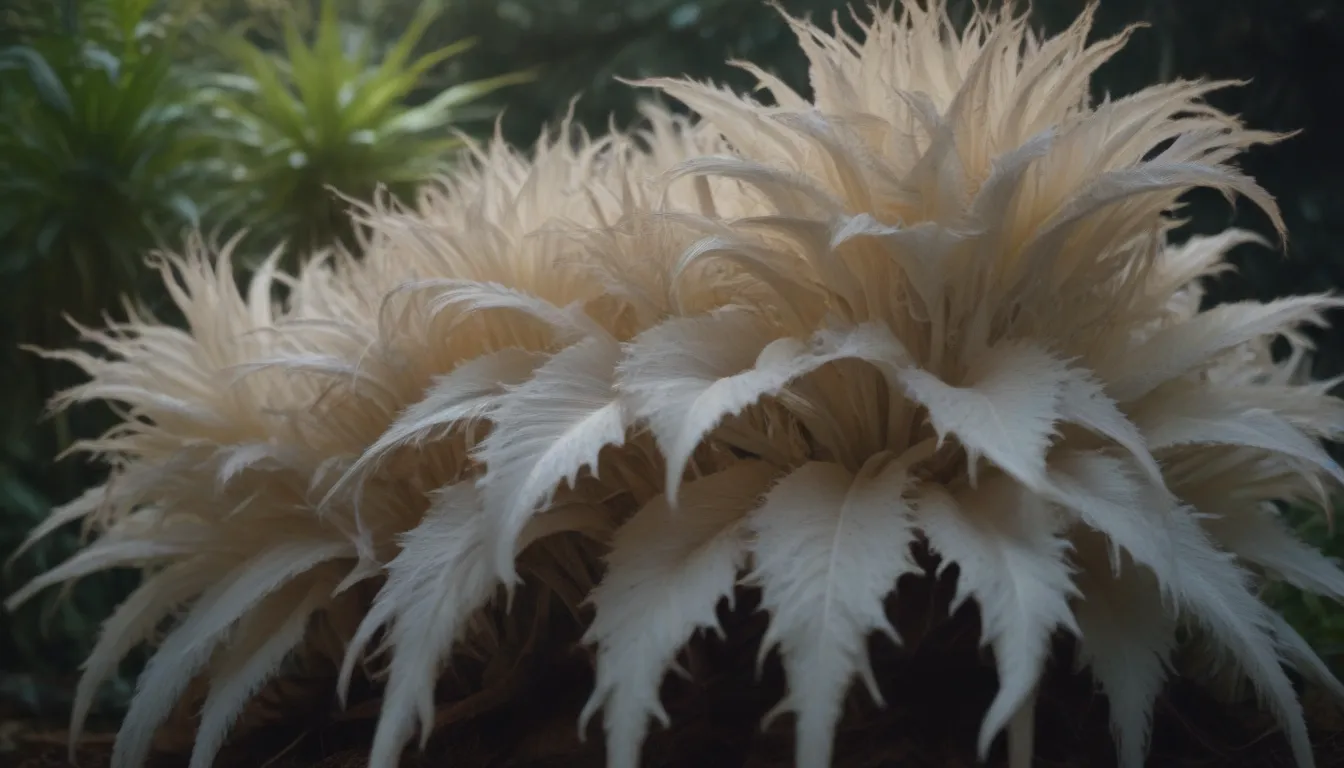
Are you looking to add a touch of modern elegance to your garden or indoor space? Ghost plants might just be the perfect choice for you. These small evergreen succulents, scientifically known as Graptopetalum paraguayense, are perennial plants that can thrive as a garden plant in warmer regions or as a potted houseplant in various settings. With their distinctive whiteish-grey pointed leaves and trailing rosette form, ghost plants are not only visually appealing but also relatively easy to care for.
The Allure of Ghost Plants
Ghost plants are known for their unique appearance and versatility in different growing conditions. Here are some key features that make them stand out:
- Rosettes typically about four inches in diameter
- Grayish-white leaves that can take on a blue-gray hue in partial shade or a pinkish-yellow tone in hot, full sun
- Dainty, star-shaped yellow flowers that bloom in spring for outdoor plants
Whether you’re a seasoned plant enthusiast or a beginner looking to dive into the world of succulents, ghost plants are a great choice due to their low-maintenance nature and fascinating aesthetics.
Ghost Plant Care 101
Taking care of your ghost plants is essential to ensure they thrive and continue to add beauty to your living space. Here are some essential care tips to keep your ghost plant healthy and happy:
Light
Like many succulents, ghost plants thrive in full sun or partial sun. Inadequate light exposure may cause the plants to become leggy and experience leaf drop. When growing ghost plants indoors, place them in a south or east-facing window to ensure they receive sufficient sunlight. The intensity of light can also affect the coloration of the leaves, with a shadier environment resulting in a blue-gray tint and hot, dry conditions leading to a pinkish-yellow hue.
Soil
Proper soil drainage is crucial for the health of ghost plants. Ensure that the soil provides adequate drainage, especially in regions with high rainfall. For garden planting, consider raised beds with a mix of grit, gravel, or sand, combined with organic materials like peat or coco coir. Potted ghost plants thrive in cactus-specific potting mix or a blend of potting soil with sand.
Water
Ghost plants have low water requirements and only need occasional irrigation, especially when grown in outdoor settings. Indoor ghost plants should be watered at the soil level to prevent water from stagnating in the rosettes. Adjust the watering frequency based on the plant’s environment and seasonal conditions.
Temperature and Humidity
Ghost plants are hardy in USDA zones 9 to 11 but can survive lower temperatures with adequate protection. Optimal growth occurs during the cooler periods of spring and fall. Excess humidity can pose a threat to ghost plants, so ensure good air circulation by spacing the plants appropriately.
Fertilizer
Although ghost plants require nutrients for growth, they thrive in low-nutrient soil. Avoid over-fertilizing, as it can harm the plants. A light annual feeding with diluted cactus fertilizer or organic soil-enriching methods is usually sufficient to keep ghost plants healthy.
Types of Ghost Plants
In addition to the classic Graptopetalum paraguayense, there are several popular varieties and hybrids of ghost plants that offer unique color variations:
- Graptopetalum x Graptosedum ‘Bronze’
- Graptopetalum x Graptosedum ‘California Sunset’
- Graptopetalum x Graptoveria ‘Douglas Huth’
- Graptopetalum x Graptoveria ‘Fred Ives’
- Graptopetalum x Graptoveria ‘Tibutans’
These different types of ghost plants can add diversity and visual interest to your collection.
Pruning and Propagating Ghost Plants
While ghost plants generally do not require extensive pruning, occasional trimming can help maintain their shape. To propagate ghost plants, you can easily root the offset “pups” that grow from the parent rosette. Propagation from healthy leaves or seed is also possible and can be a rewarding experience for plant enthusiasts.
How to Grow Ghost Plants From Seed
Starting ghost plants from seed is another option to expand your collection. Follow these steps to grow ghost plants from seed:
- Collect tiny seeds from mature seed pods or purchase them from a reputable source
- Sow the seeds on sterile potting mix and water gently with a plant mister
- Provide bright light and maintain a temperature of around 70 degrees Fahrenheit for optimal germination
With patience and care, you can grow a vibrant garden filled with ghost plants from seeds.
Potting and Repotting Ghost Plants
Growing ghost plants in containers is a popular choice for many plant enthusiasts. Select a well-draining potting mix and a container with good drainage to support the plant’s root system. When repotting, handle the plant gently to avoid damaging the delicate pruinose coating on the leaves. Position ghost plants at the container’s edge to showcase their unique colors and textures effectively.
Overwintering Your Ghost Plants
In regions with colder winters, providing adequate protection for ghost plants is essential to ensure their survival. Cover outdoor plants with dry mulch during the coldest months, and maintain moderate temperatures for indoor plants. Adjust watering practices during the winter months to accommodate the plant’s dormancy period.
Common Pests and Diseases
While ghost plants are relatively resistant to pests and diseases, indoor plants may encounter issues like mealybugs or root rot. Inspect your plants regularly and take prompt action to address any pest infestations or signs of disease. Proper care and maintenance can help prevent common problems and keep your ghost plants thriving.
Enhancing Bloom Potential
Ghost plants are primarily grown for their unique foliage, but if you’re eager to see them bloom, providing ample sunlight is key. Avoid excessive fertilization, as it can hinder blooming and redirect the plant’s energy towards leaf and stem growth. Focus on creating optimal growing conditions to encourage occasional flowering in your ghost plants.
Troubleshooting Common Problems
Despite their resilience, ghost plants may experience issues like shriveled leaves, leaf drop, burned leaves, or leggy growth. Identifying the root cause of these problems, such as under or overwatering, insufficient sunlight, or nutrient imbalances, is crucial for maintaining the plant’s health. With proper care and adjustments, you can address common ghost plant issues effectively.
In conclusion, ghost plants are captivating succulents that offer a blend of beauty and low-maintenance care. By understanding their unique growing requirements and implementing best practices, you can cultivate a thriving collection of ghost plants in your garden or indoor space. Experiment with different varieties, propagation methods, and care techniques to elevate your gardening experience and enjoy the timeless appeal of these ghostly beauties. Happy planting!
